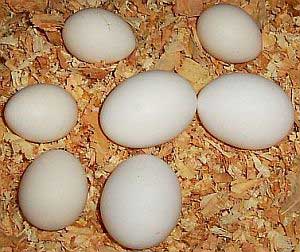 |
| Place the egg you want to test on a plate and spin it with two fingers (Image: nifty-stuff) |
If you want to solve the puzzle without cracking the egg, you can use your knowledge of mechanics to overcome this small challenge. Place the egg you want to test on a plate and spin it with two fingers. A raw egg will be difficult to spin right away. However, a hard-boiled egg (especially a well-cooked one) will spin quickly and for a longer time.
It spins so fast that you cannot clearly see its shape; it appears as a flat white sphere and can even spin on its pointed end.
This occurs because a hard-boiled egg spins as a solid object; while a raw egg has a liquid interior that cannot immediately respond to the spinning motion, which leads to its inertia holding back the motion of the hard shell. At this moment, the liquid inside acts as a damping material.
Hard-boiled and raw eggs also react differently when the spinning is stopped. If you touch a spinning hard-boiled egg, it will stop immediately. Conversely, a raw egg will continue to spin a bit longer. This is also due to inertia: the liquid mass inside the raw egg continues to move after the hard shell has been stopped. In contrast, the contents of a hard-boiled egg stop at the same time as the outer shell when it is halted.


















































